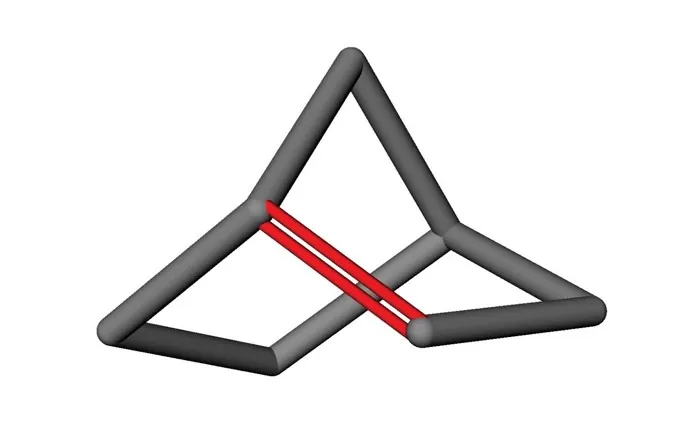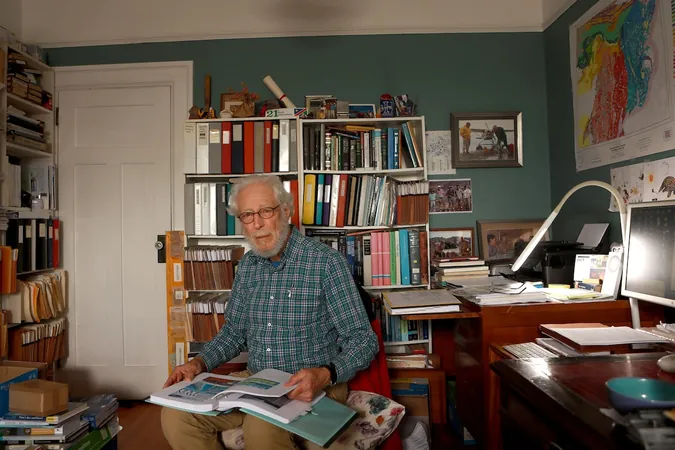
Breaking Boundaries: The Dawn of Anti-Bredt Olefins in Chemistry!
2024-11-05
Author: William
Overview
In an astonishing breakthrough for organic chemistry, Neil A. Garg and his research team at the University of California, Los Angeles (UCLA) are challenging a century-old principle known as Bredt’s rule. This landmark discovery not only redefines the potential of bridged compounds but also opens up exciting new avenues for constructing intricate 3D molecular architectures.
Understanding Bredt's Rule
Bredt’s rule, established over 100 years ago, dictates that bridged compounds—characterized by two interconnected rings—cannot accommodate a double bond at the junction without incurring extraordinary strain. The underlying assumption has been that such a bond would be twisted and bent, moving it far from its typical planar orientation, which should render it unstable. However, Garg's team, with their recent publication in *Science* (2024), has thrown that notion into disarray, demonstrating that what was once thought impossible—creating anti-Bredt olefins—is indeed feasible and could be significantly valuable for complex synthesis in chemistry.
Innovative Methodologies
“I believe the concept of impossibility will fade away with this research,” remarked Luca McDermott, a PhD student and co-lead author of the study. Garg and his team meticulously crafted various anti-Bredt olefins through innovative elimination reactions, using silyl precursors as intermediates. While these molecules are inherently too strained to be isolated, they were effectively utilized in cycloaddition reactions to form complex structures.
Previous Efforts and Current Advances
Garg's lab is not the first to challenge Bredt’s rule; attempts have been made since the late 1960s, yet they were often marred by low yields and unwanted by-products. Garg emphasized that past efforts were "scattered and unuseful," a sentiment echoed by the growing understanding and techniques that chemists have developed for manipulating unique molecular geometries. This newfound proficiency enables the exploration of structures that were previously deemed inaccessible.
Chiral Anti-Bredt Olefins
One particularly striking experiment involved the creation of a chiral anti-Bredt olefin, with its stereochemical properties deriving solely from the molecule's twisted structure. This was subsequently trapped using anthracene, producing a single-enantiomer product—a compelling indication that the reaction proceeded through an anti-Bredt intermediate. The excitement was palpable when McDermott, attending the American Chemical Society Spring 2024 meeting in New Orleans, witnessed his colleagues analyze their thrilling findings over a video call.
Community Response
Prominent figures in chemistry, such as Paul Wender from Stanford University, were quick to praise Garg's study, recognizing its thoroughness and the potential for major implications in the field. He noted that while Garg's team may not be the first to synthesize anti-Bredt olefins, they are paving the way for broader acceptance and research into these unusual compounds.
Bridging Research and Application
Carolyn Bertozzi, another esteemed chemist from Stanford and a Nobel Prize laureate, commended the work for bridging the gap between curiosity-driven research and practical applications. She noted, “It’s invigorating to see old functionalities reinvigorated for contemporary use.”
Future Directions
As the field of chemistry continues to evolve, Garg, along with his dedicated team, is committed to further unraveling the mysteries of alkenes with unconventional geometries. With this groundbreaking research, they encourage fellow scientists to embrace the challenge of bending the established rules, potentially leading to revolutionary advancements in organic synthesis.
Conclusion
This study not only marks a significant milestone in chemical research but also encourages a rethink of what is achievable in molecular design, making it an electrifying time for chemists worldwide!









 Brasil (PT)
Brasil (PT)
 Canada (EN)
Canada (EN)
 Chile (ES)
Chile (ES)
 España (ES)
España (ES)
 France (FR)
France (FR)
 Hong Kong (EN)
Hong Kong (EN)
 Italia (IT)
Italia (IT)
 日本 (JA)
日本 (JA)
 Magyarország (HU)
Magyarország (HU)
 Norge (NO)
Norge (NO)
 Polska (PL)
Polska (PL)
 Schweiz (DE)
Schweiz (DE)
 Singapore (EN)
Singapore (EN)
 Sverige (SV)
Sverige (SV)
 Suomi (FI)
Suomi (FI)
 Türkiye (TR)
Türkiye (TR)